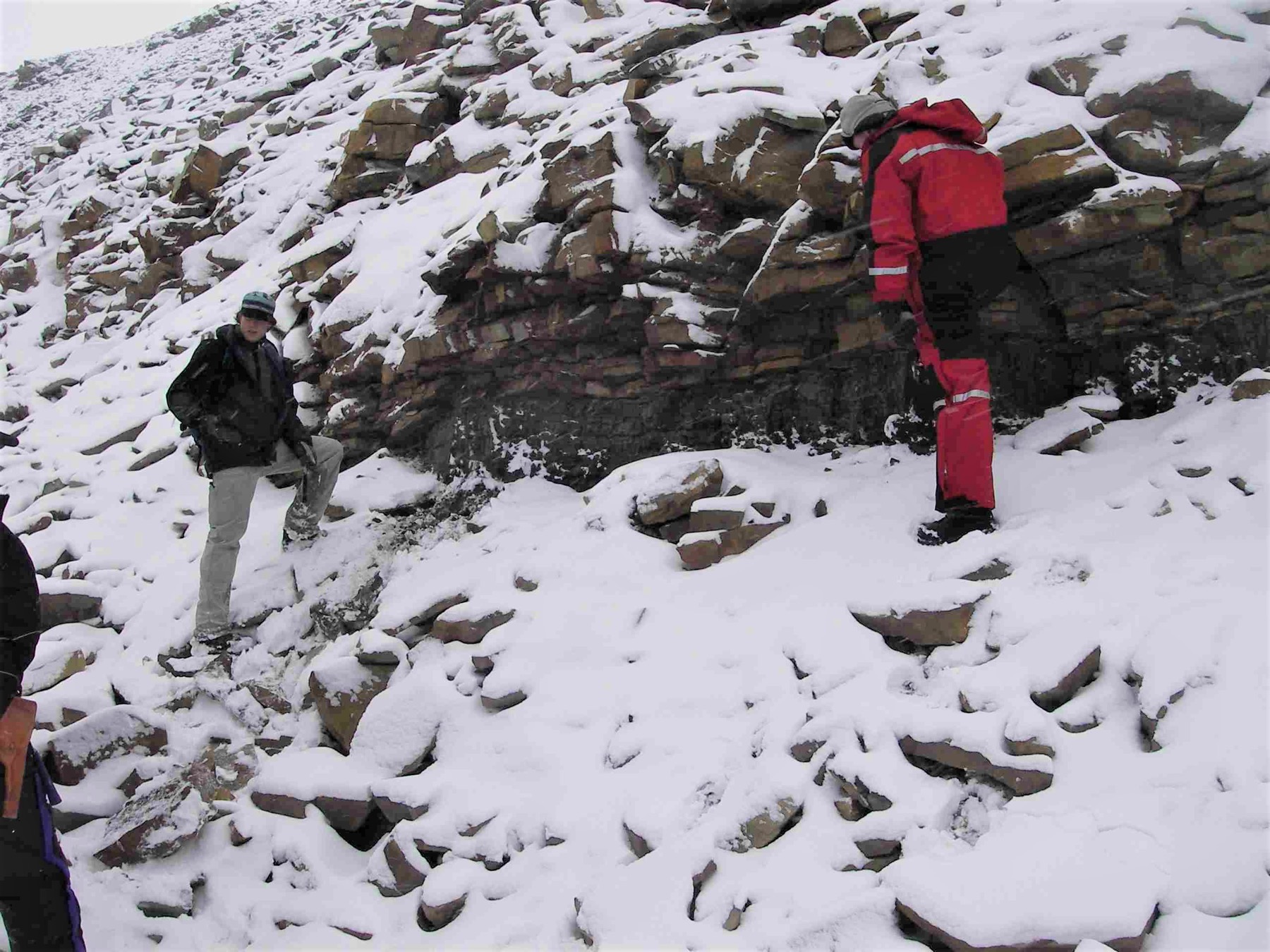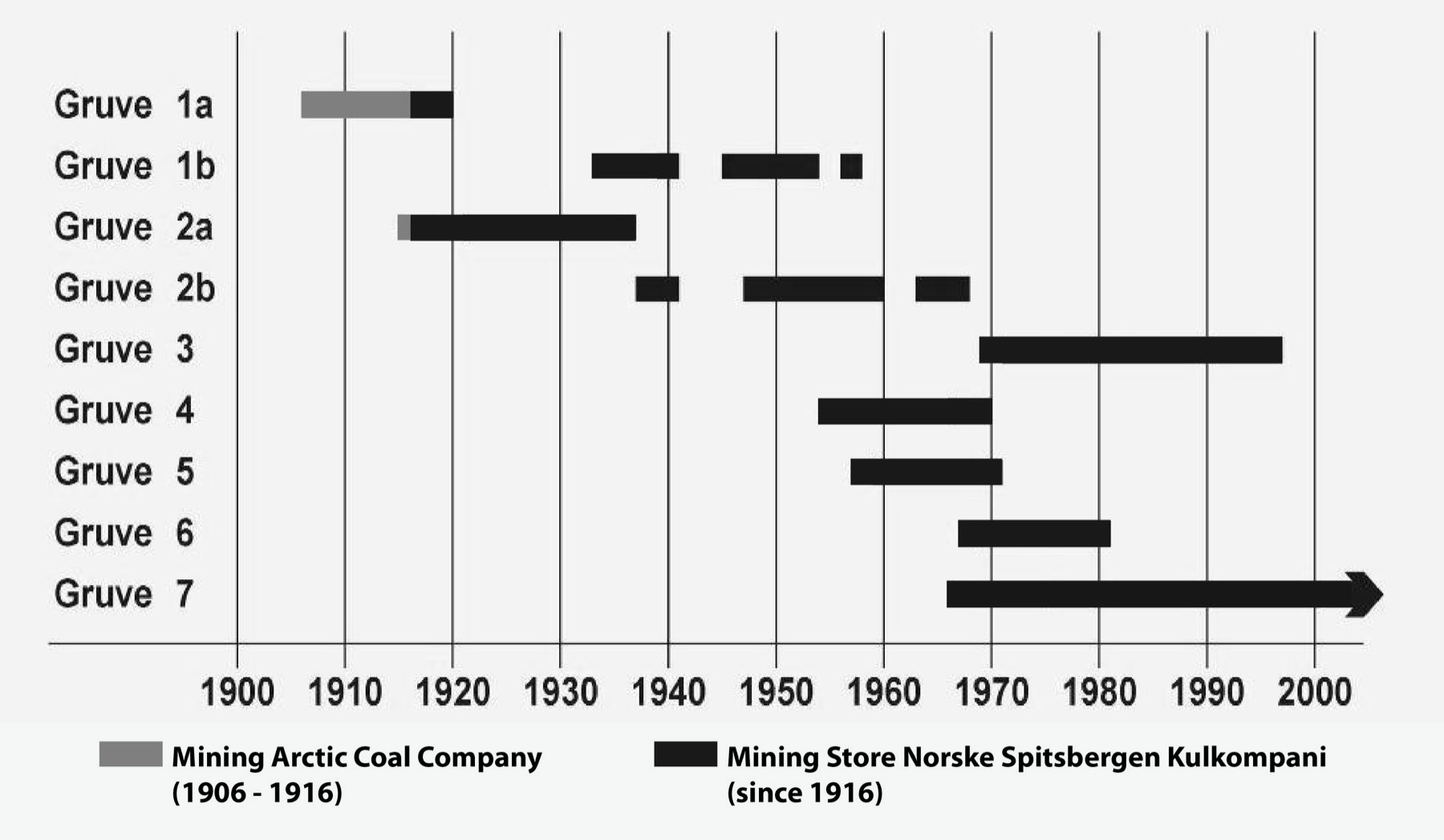One of the best coal outcrops close to Longyearbyen is in Steintippdalen, close to the mine entrance to the old mine 2. The coal seam is cropping out just below a thick sandstone bed. The coal was deposited as peat some 60 million years ago. Even though Svalbard then was situated at ca. 80° North, vast vegetation dominated a landscape that looked so much unlike the one we see today. It was possible to simply walk over to Greenland without getting wet feet because the North Atlatic did not exist yet. There was a long polar night, but the climate was relative warm and created the condition for blooming landscapes. No comparable place exists on earth today! Parts of the land slowly subsided, ground water level rose and the coastal swamps could grow thicker and thicker. Where grasses, ferns and horsetail had created a stable ground along lakes and lagoons, hazelnut bushes and birch trees gained ground to again make place for trees that are either not unfamiliar to us: elm, beech, plane and giant redwood, or at least the ancestors of those. The land continued subsiding and the former wetlands and mires were covered with several kilometres of sediments. How come that we know about those forests and wetlands than? Well, they are still here! The land got pressed up again, luckily even a bit further than it was 60 million years ago. If we walk inside the coal mines, we can find fossils and imprints of the mentioned plants in the roof and the surrounding rocks. And the coal itself is nothing else than peat, slowly roasted for some million years at around 100°C. What happens exactly? When the peat slowly got covered by sand and mud, the water was pressed out and thus it dried, turning slowly into brown coal (lignite). Typically, temperatures rise with 30°C per 1000 metres depth, at the same time increases the pressure. More and more water was pressed out of the coal and at one point the brown coal changes its chemical structure and gets black and lustrous. This point is called the geochemical gelification and marks the change from brown coal to bituminous coal, the latter mined in Longyearbyen and visible here in Steintippdalen. The whole process is called coalification and explains how 6 – 10 metres of peat can develop into 1 metre of Longyearbyen coal. With further increase in temperature, pressure and time the coal would be transformed into anthracite, graphite and, at very high pressure, diamond.
The Longyearbyen Field Guide
We are a group of scientists and Svalbardians who want to share our knowledge about the vicinity of Longyearbyen with you. This app is non-commercial and meant for locals, guides, tourists and everyone interested in science.
It is initially based on the book “The Geology of Longyearbyen” and supported by the Svalbard environmental protection fund, The University Centre in Svalbard, Store Norske Spitsbergen Kulkompani and HDpublish.
We appreciate all of the voluntary contributions and support from all authors and initiators for making this app possible.




